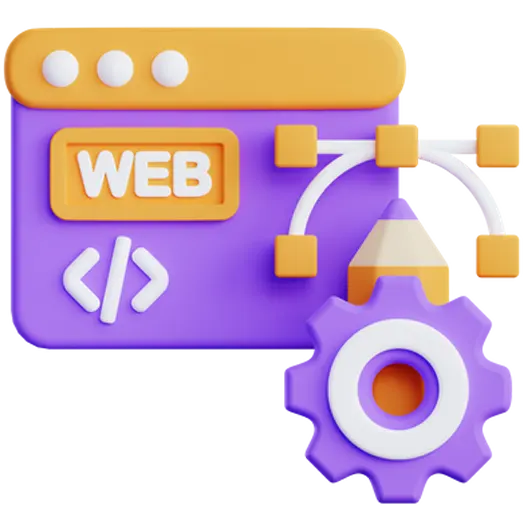
Building a Scalable System with Event-Driven Architecture
In today’s rapidly evolving digital landscape, businesses require systems that are not only functional but also scalable and resilient. Event-Driven Architecture (EDA) provides a powerful paradigm for building such systems. This article explores the core principles of EDA and how it can be leveraged to create applications that can efficiently handle increasing workloads and adapt to changing business requirements. At Doterb, we believe that “Efficient systems are born from collaboration between strategy and technology,” and EDA embodies this philosophy.
Table of Contents
- What is Event-Driven Architecture?
- Key Components of EDA
- Benefits of Event-Driven Architecture
- Use Cases for EDA
- Implementation Challenges
- Best Practices for Building EDA Systems
- Frequently Asked Questions (FAQ)
What is Event-Driven Architecture?
Event-Driven Architecture (EDA) is a software architecture pattern centered around the concept of “events.” An event is a significant change in state that triggers a reaction in another part of the system. Instead of components directly calling each other, they communicate asynchronously through these events. This decoupling allows for greater flexibility and scalability.
Key Components of EDA
EDA typically involves the following core components:
- Event Producers: These components generate events, signaling that something has happened. For example, a “OrderPlaced” event.
- Event Router (or Broker): This component receives events from producers and routes them to the appropriate consumers. Examples include message queues like RabbitMQ or Apache Kafka, or cloud-based services like AWS EventBridge.
- Event Consumers: These components listen for specific events and perform actions in response. For instance, an inventory management system might consume an “OrderPlaced” event to update stock levels.
Benefits of Event-Driven Architecture
EDA offers several significant advantages:
- Scalability: Components can be scaled independently, allowing the system to handle increased load without requiring a complete overhaul.
- Loose Coupling: Components are not directly dependent on each other, making the system more flexible and easier to maintain. Changes to one component are less likely to impact others.
- Resilience: If one component fails, the rest of the system can continue to operate. Events can be queued and processed later, ensuring that no data is lost.
- Real-time Processing: Events can be processed as they occur, enabling real-time updates and responsiveness.
- Improved Auditability: Each event provides a clear record of what happened and when, making it easier to track and audit system activity.
Use Cases for EDA
EDA is well-suited for a wide range of applications:
- E-commerce: Handling order processing, inventory management, and customer notifications.
- Financial Services: Processing transactions, detecting fraud, and managing risk.
- IoT: Collecting and analyzing data from sensors and devices.
- Logistics: Tracking shipments and managing delivery routes.
- Healthcare: Monitoring patient health and managing medical records.
Implementation Challenges
While EDA offers many benefits, it also presents some challenges:
- Complexity: Designing and implementing an EDA system can be complex, requiring careful planning and coordination.
- Eventual Consistency: Because events are processed asynchronously, data consistency may not be immediate. Developers need to account for this eventual consistency.
- Debugging: Tracing the flow of events can be challenging, especially in complex systems.
- Event Schema Management: Managing and evolving event schemas is crucial to ensure compatibility between producers and consumers.
Best Practices for Building EDA Systems
To successfully implement EDA, consider the following best practices:
- Clearly Define Events: Events should be well-defined and represent meaningful business events.
- Use a Reliable Event Router: Choose an event router that can handle the expected volume of events and provide reliable delivery.
- Implement Idempotency: Ensure that event consumers can handle duplicate events without causing errors.
- Monitor and Log Events: Monitor event flow and log events for debugging and auditing purposes.
- Use Event Sourcing: Consider using event sourcing to persist the history of events, which can be used to rebuild the state of the system.
Frequently Asked Questions (FAQ)
Q: What’s the difference between EDA and a traditional request/response architecture?
A: In a request/response architecture, one component directly calls another and waits for a response. In EDA, components communicate asynchronously through events, leading to looser coupling and greater scalability.
Q: What are some popular technologies for implementing EDA?
A: Popular technologies include Apache Kafka, RabbitMQ, AWS EventBridge, Azure Event Grid, and Google Cloud Pub/Sub.
Q: How do I ensure data consistency in an EDA system?
A: Data consistency in EDA is often eventual. Strategies like idempotency, compensating transactions, and carefully designed event schemas are crucial to manage data consistency in the long term.
EDA offers a powerful approach to building scalable, resilient, and responsive systems. By understanding the core principles and best practices, organizations can leverage EDA to create innovative solutions that meet the demands of today’s digital world. At Doterb, we have extensive experience in designing and implementing event-driven architectures for various industries.
If your business needs an efficient website or digital system based on Event-Driven Architecture, contact the Doterb team today. Let us help you transform your ideas into reality.
